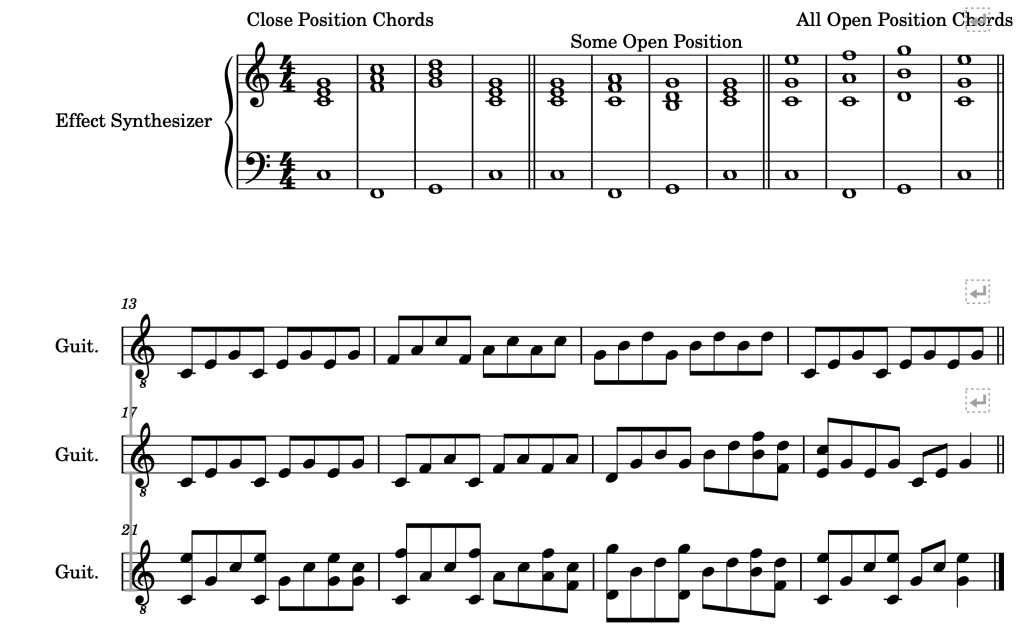Project 5 Table of Contents
Project 5: Overview – Harmony (Progressions) – Keyboard Styles
In this project, we will take the idea of chord progressions and extend it to include various ways or musical styles to notate these chords. The approach taken depends upon the instrument being used (i.e. piano vs guitar) and musical style (pop, rock, folk). One can easily sketch out ideas, listen to them and then make edits and adjustments as needed.
Summary: Working with a chord progression of your choice, create several versions of the progression that is appropriate for the instrument and/or musical style.
Features of this project
- Create and ‘arrange’ a chord progression for an instrument of your choice.
- Using the same progression, create a contrasting version for a different instrument.
How To… Project 5
For this project, use your ears and own judgement! Some ideas to consider:
Keyboards
When playing a chord via a music keyboard, it is easy to think of a 3 note chord such as “C E G” played by one hand.
When the notes of a chord are played as close as possible to each other, the voicing is referred to as “close position”. When using close position chords in a progression, the keyboard player would move up or down to the new chord with all of the notes moving in the same direction. The video above is an example of a chord progression of 1, 2, 3, 4, 5, 6, 7 (or C D E F G A B)
Remember the project you did where you created variations of a C chord (see this section)? This really is an extension of that approach.
Chord Progression Example (1 – 4 – 5 – 1)
Here’s a very standard and familiar chord progression: 1 – 4 – 5 – 1 (also written as I IV V I and in the Key of C: C F G C) written for electric piano and guitar. You will see and hear close position chords, open position chords, and a style that seems appropriate for each instrument.

Project 5: Practice Sessions
Practice Sessions
Here’s a short demo of using a C chord (and an F chord) to create some various keyboard styles.

